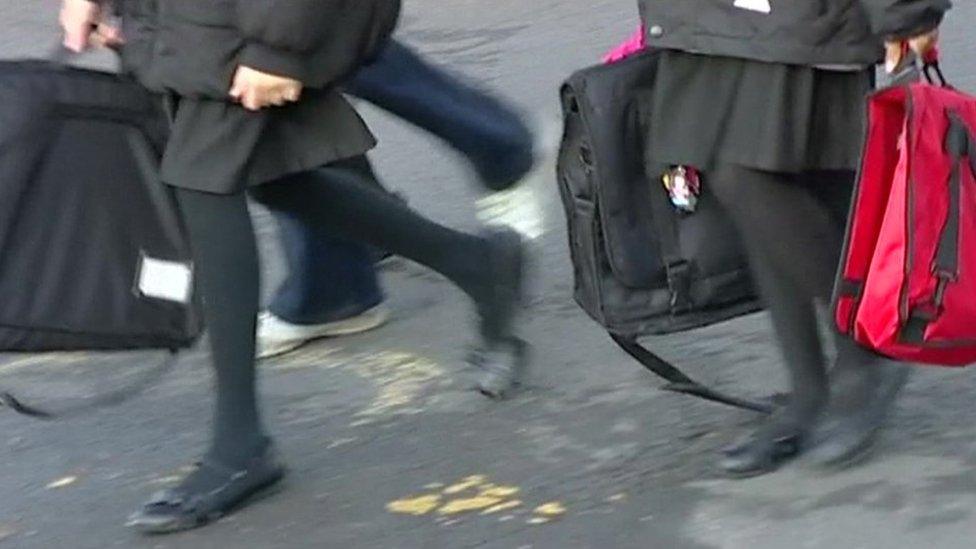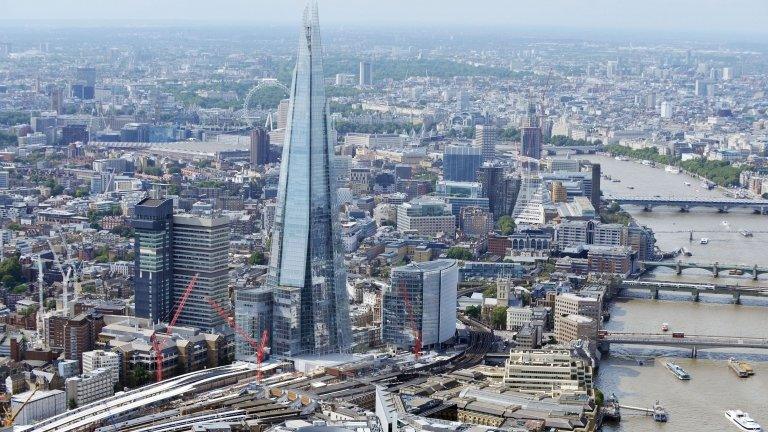Top state schools 'dominated by richest families'
- Published
- comments

Pupils are finding out who will be with them on their journey through education
On the day that families in England and Wales are allocated secondary school places, research shows that the richest children dominate top state schools.
Analysis of data shows 43% of pupils at England's outstanding secondaries are from the wealthiest 20% of families.
The study from education charity Teach First also shows poorer pupils are half as likely as the richest to be heading to an outstanding secondary school.
Ministers said plans for new grammars would create more good school places.
Under the admissions code, state schools in England must follow strict rules to ensure fair access to school places.
Teach First, which fast-tracks high-flying graduates into schools in deprived areas, also commissioned a survey of 2,000 adults on their views on gaining access to good and outstanding schools.
Children's futures
It showed nine out of 10 parents felt it was very important that their child went to a highly rated school.
Teach First said there was very little variation between parents from different social groups.
About 93% said attending their first choice school was key to their child's future, and nearly three-quarters said they would appeal if they did not get their first choice school.
The Teach First research coincides with a separate study, external by the social mobility charity Sutton Trust, which suggests poorer children in England are much less likely to gain places at the 500 comprehensives that achieve the best GCSE grades.
Analysis of figures from the National Pupil Database for the charity found over 85% of schools in the top 500 took a smaller proportion of disadvantaged pupils than lived in their immediate areas.
In the average state school, 17% of secondary pupils were eligible for free school meals, compared with 9% in the top 500, the researchers found.
About half this difference is due to these schools having catchment areas with fewer disadvantaged pupils, but the rest is due to social selection.
Faith schools
The study also found a house price premium of about 20% near top comprehensives
A typical house in one of these catchment areas costs about £45,700 more than the average property in the same local authority.
This means pupils whose families can afford to buy in these areas are more likely to get places at the top secondary schools, pricing poorer pupils out, says the charity.
Faith schools, which make up a third of the top 500 schools, and admit pupils on religious grounds from outside their immediate neighbourhood, were particularly socially selective.
Faith schools in the top 500 took 6% fewer pupils on free school meals than lived in the area nearest the school - compared with 2% fewer in non-faith schools, the researchers found.
Last year, 62,301 appeals were lodged for primary and secondary schools (3% of total admissions) of which 22% were successful.
Both sets of research come as parents across England receive details of which secondary schools their children have been offered.
Last year, 84% of applicants for a secondary school place were offered their first preference school.
And about 95% received an offer from one of their top three preference schools.
A Department for Education spokeswoman called selection by house price "simply unfair", adding that the government had already set in motion plans to tackle it.
"We plan to create more good school places in more parts of the country by scrapping the ban on new grammar schools, as well as harnessing the expertise and resources of our universities, and our independent and faith schools," said the spokeswoman.
- Published2 August 2016

- Published12 January 2016
